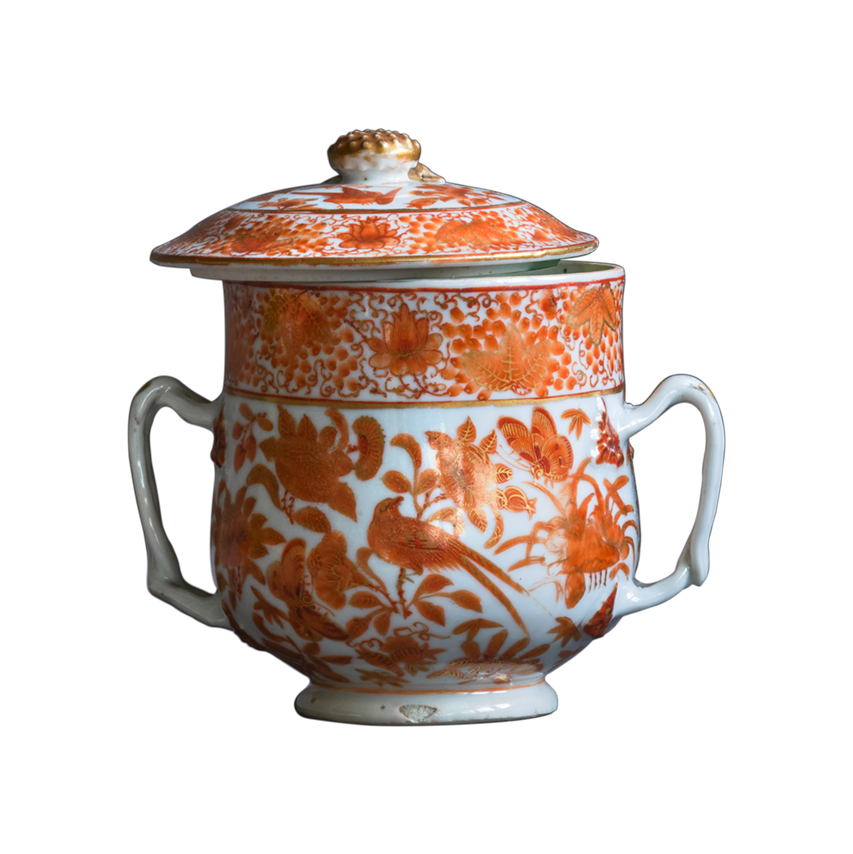STILL LIFE WITH CAKE, 2023
Jump to section ︎︎︎
1. Ceramics
2. Food
3. Flora
4. Raphaelle Peale
1. Ceramics
 Sugar Bowl
Sugar BowlMade in China, 1800–1810
Made of Hard-Paste Porcelain
H. 5.25”, W. 5.625”
Gift of Ross Rosazza, R1985.4.1.39ab
2. Food


Pictured above (left to right): rubbing imprint of Lexington brick pattern on W&L campus; Lexington brick mooncakes baking in the oven
Mooncakes (月餅, yuè bǐng) are traditional Chinese cakes eaten during the Mid-Autumn Festival. The cakes were used during the overthrowing of the Mongol rule in 1300s by hiding messages inside or using the designs on top as a mosaic puzzle to communicate hidden messages. Mooncakes have a very long history in China, and possibly originate from contact with Arab ma’amoul (date-filled molded cakes) through Central and East Asia trade.
3. Flora
Originating in China, the tree of heaven (Ailanthus altissima) was introduced to Europe and the United States in the 1700s during the chinoiserie craze. It has a long history in China of use in traditional medicine and in raising silkmoths. Due to its ability to grow and spread in many conditions, the tree crowds out many native species in the U.S.4. Raphaelle Peale
This piece responds directly to Raphaelle Peale (1774–1825), who was one of the earliest and most well-known American still life painters. Peale made a series of still lifes with this style of small, frosted cake in spare but tightly clustered arrangements between 1813–1822. Shih’s Still Life with Cake is one of the smallest in LONG TIME NO SEE, a response to Peale’s small compositions that were meant to be “single-serving” for the individual viewer.
Raphaelle Peale, Still Life with Cake, 1818.
Oil on panel, 10.75 x 15.25”
The Metropolitan Museum of Art,
Maria DeWitt Jesup Fund, 1959, 59.166
︎︎︎PREV
NEXT︎︎︎
